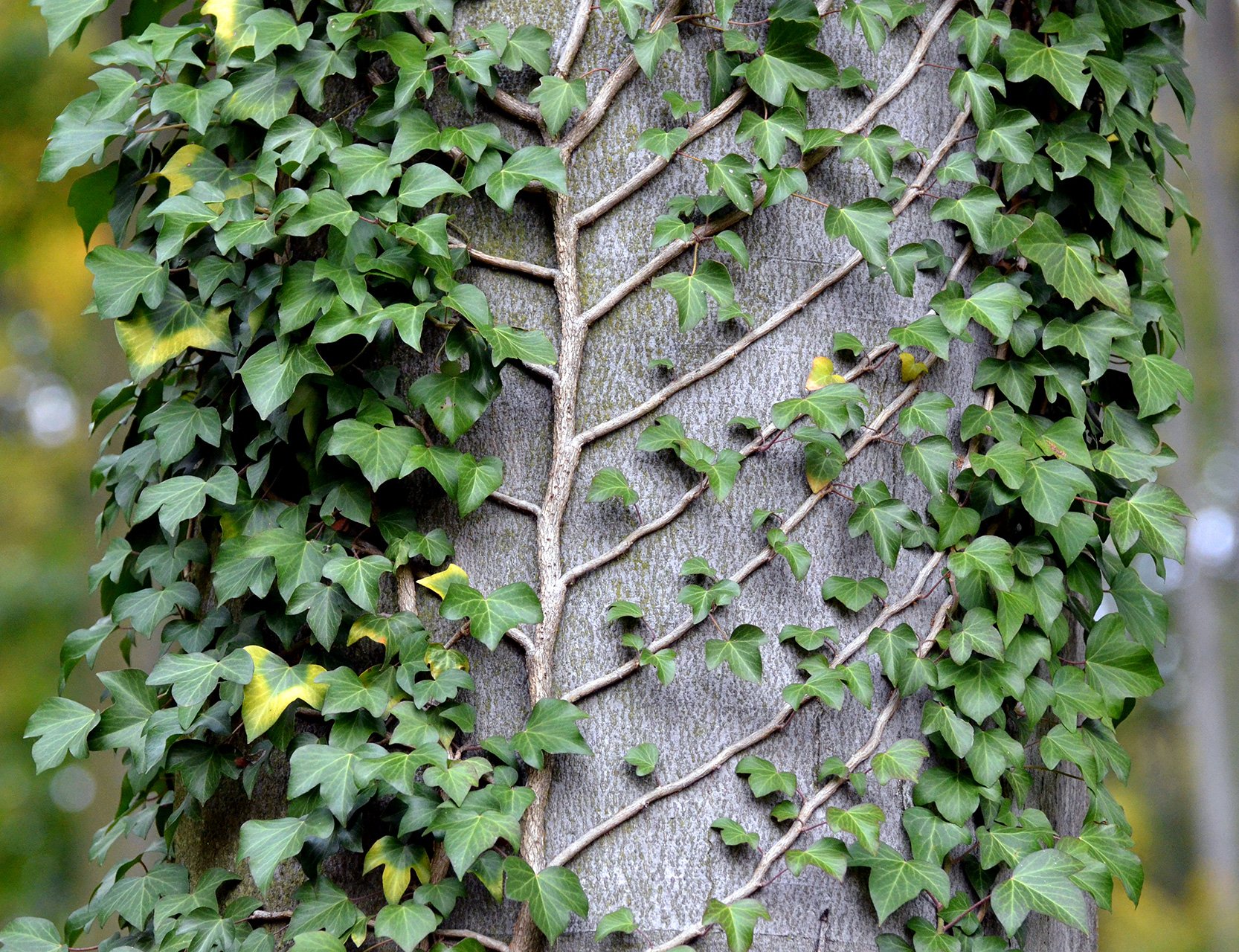Photo: English Ivy, an invasive species in Northern Virginia, Wikimedia Commons
What do English ivy, barberry, butterfly bush, and mimosas (the tree, not the drink) have in common? You can find them in most Northern Virginia neighborhoods, and you can buy them at many local nurseries, garden shops and big box stores. But they are all invasive plants in Northern Virginia and can harm the environment. Although they threaten to overwhelm us, there are some steps you can take to reduce their spread.
English Ivy, Wikimedia Commons
But before we get to actions you can take, a little background: Invasive plants are species that have been introduced by human activity into a region in which they did not evolve and cause harm to natural resources, economic activity or humans. The Virginia Department of Conservation and Recreation’s website states that invasive plants cause more than $120 billion each year in losses in the United States. They displace natural plant species that provide habitat and food for native animals, and some can clog waterways, cause crop losses and degrade soil.
Passing state legislation to curb the sale of invasive plants in Virginia has so far mostly been unsuccessful, due largely to the opposition of growers and sellers. In February 2021, the legislature approved a bill creating a workgroup to evaluate various methods of reducing the sale of invasive plants. The workgroup, which included Glenda Booth representing ASNV, issued a report that largely failed to meet the objectives set out in the enabling legislation, concerns expressed at pages 24-25 of the report.
In the 2022 regular General Assembly session, Delegates Paul Krizek and David Bulova introduced bills that, among other things, would have required retail establishments to label invasive plants to educate consumers about which plants are invasive and would have prioritized the use of native plants on state property. Unfortunately, the only legislation enacted requires the Commissioner of Agriculture to develop a brochure that retail establishments can use to explain the value of native plants and the harm caused by invasives. Retail establishments would have to reproduce the brochures at their own expense, and the law will expire on July 31, 2023.
Several legislators may introduce bills in the 2023, session which will begin in January, and we will report on them when they do.
Steps You Can Take Now
Would you like to help reduce the number of invasive plants in our region? Here are four things you can do:
Educate yourself on what plants are invasive before your next trip to the plant nursery. You can get a list of invasive plants on the website of the Virginia DCR and guides to native plants on the Plant Nova Natives website.
Remove invasive plants from your yard and replace them with native plants. For guidance on making your yard a wildlife sanctuary, contact Audubon at Home for a visit.
Sign a petition asking Home Depot to stop selling invasives. Having failed in their efforts to achieve significant statewide action on invasive plants, some concerned residents of Northern Virginia are trying now to convince a local retail establishment to stop selling invasives. Lauren Taylor, who participates in Fairfax County’s Invasive Management Volunteer Program, created the online asking Home Depot to stop selling invasive plants. More than 50,000 people have signed the petition so far. The petition has garnered support from Plant NOVA Natives, Blue Ridge Partnership for Regional Invasive Species Management, and other groups.
Join the hundreds of volunteers working to better control invasive plants, through Fairfax County’s Invasive Management Volunteer Program, and programs sponsored by EcoAction Arlington, the Friends of Dyke Marsh, and other organizations throughout Northern Virginia.


